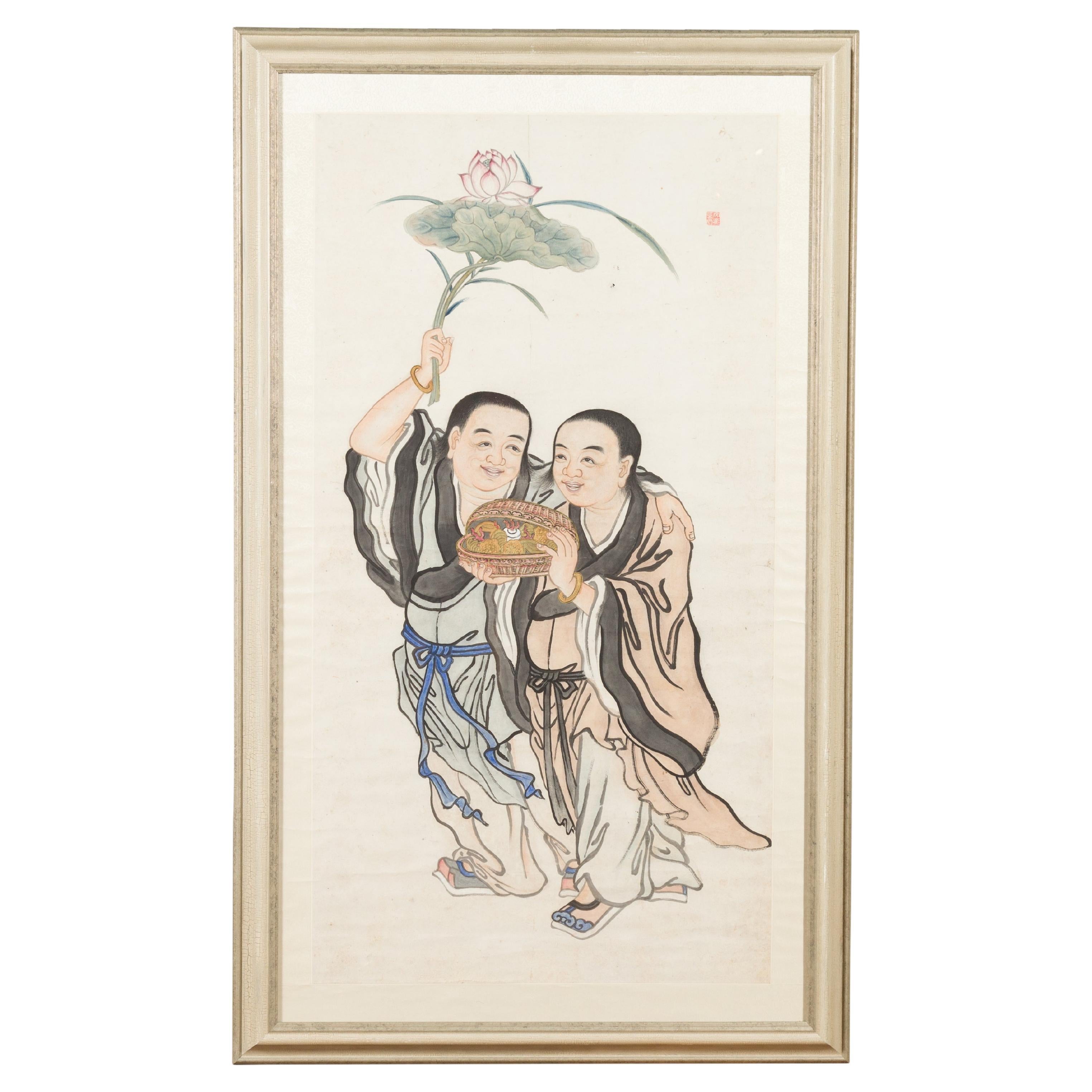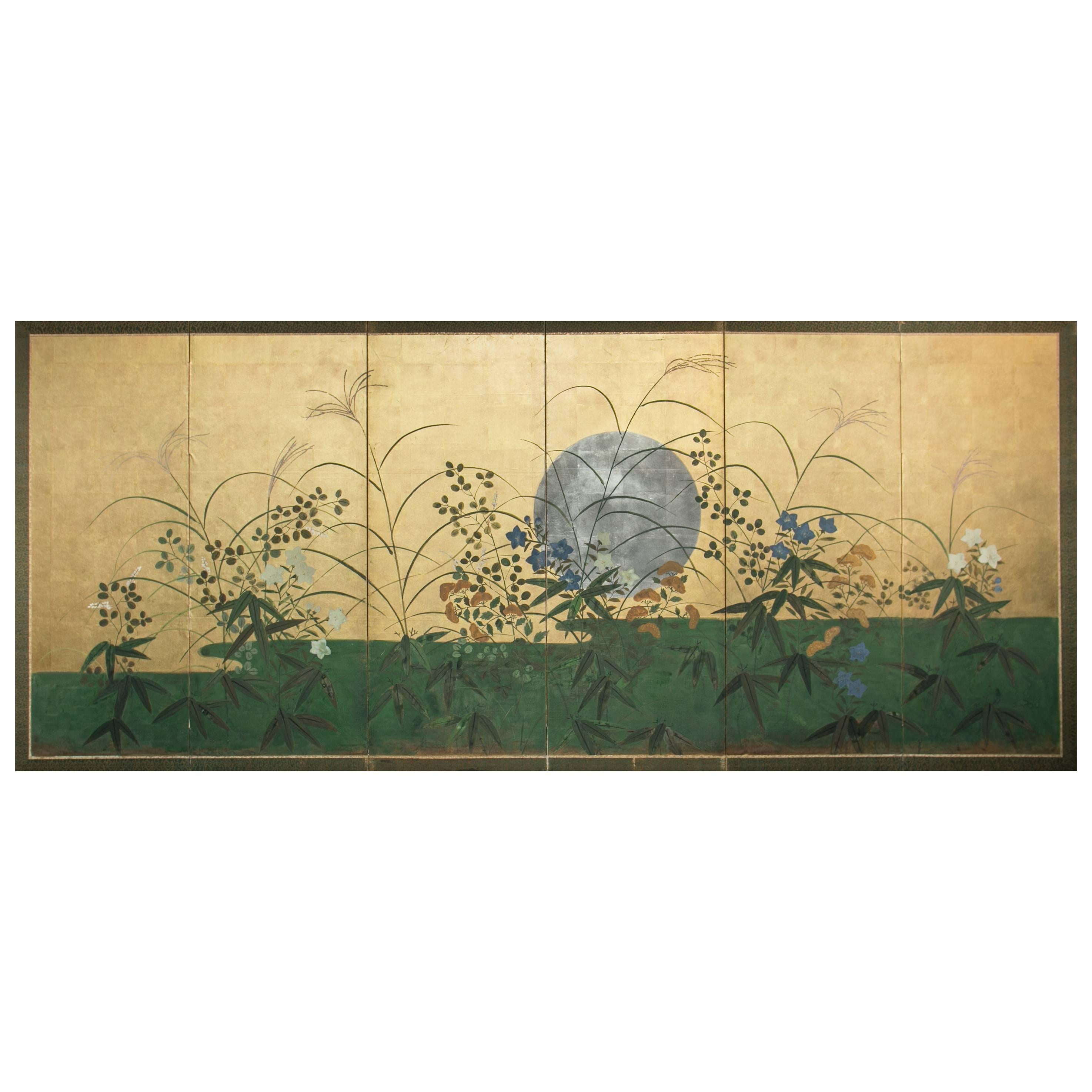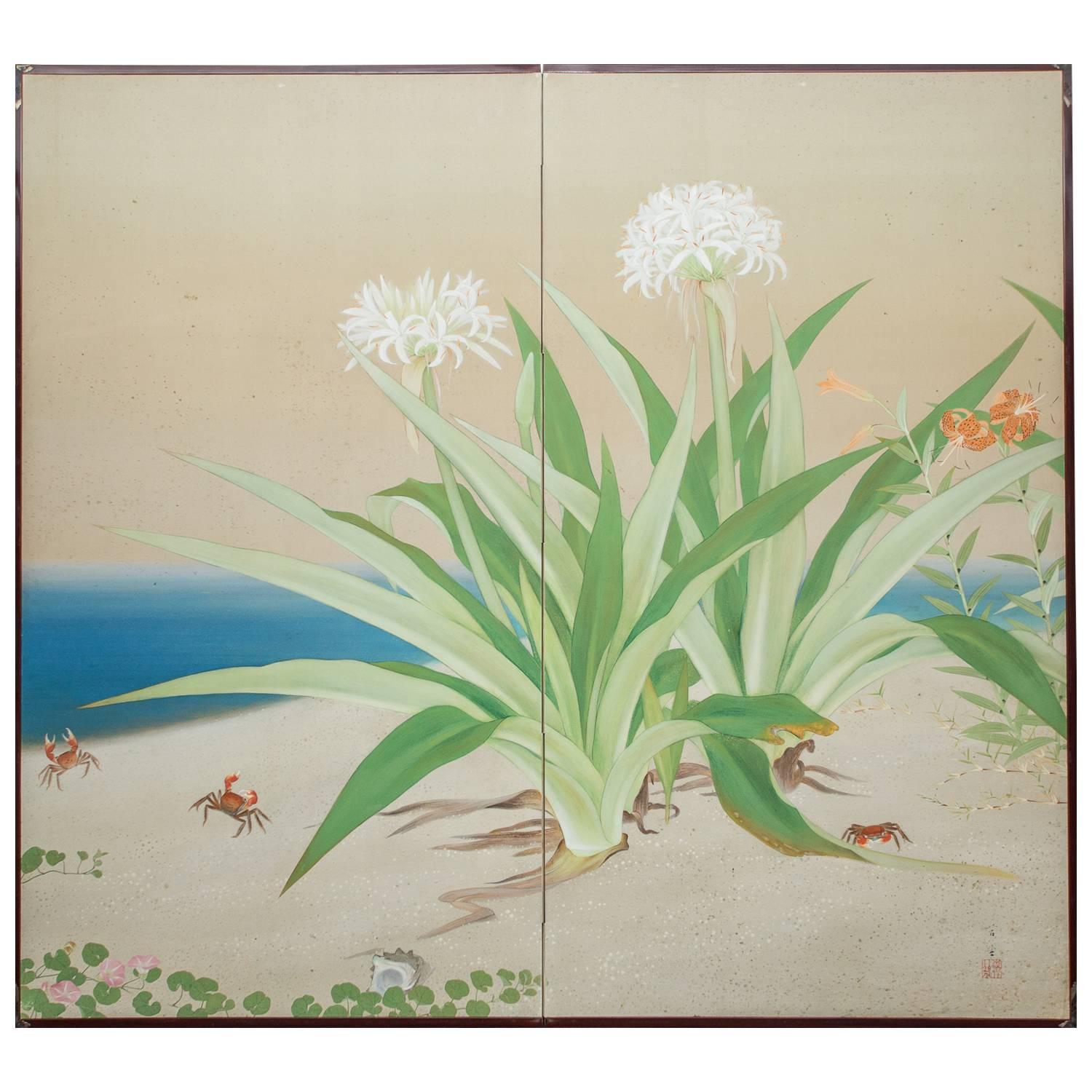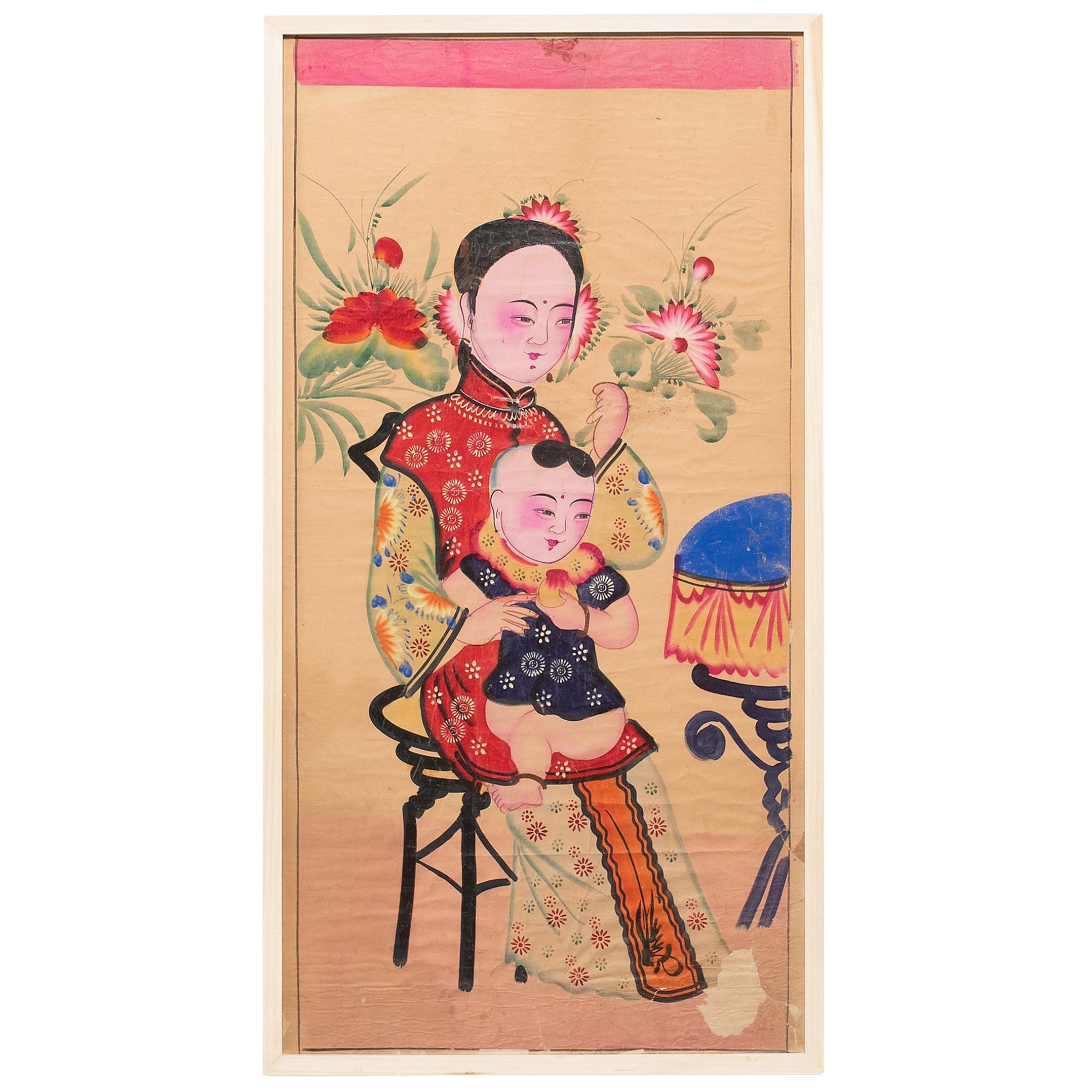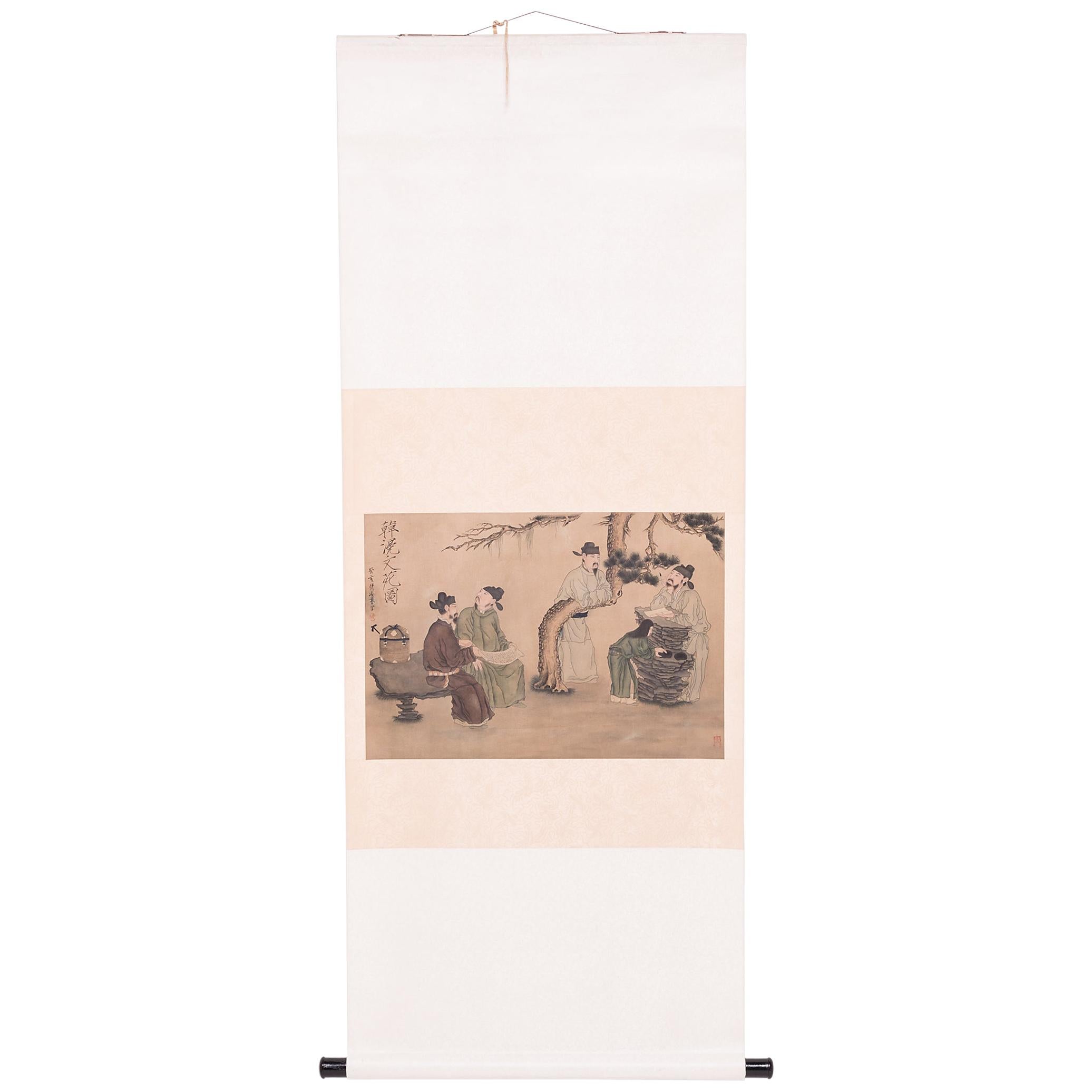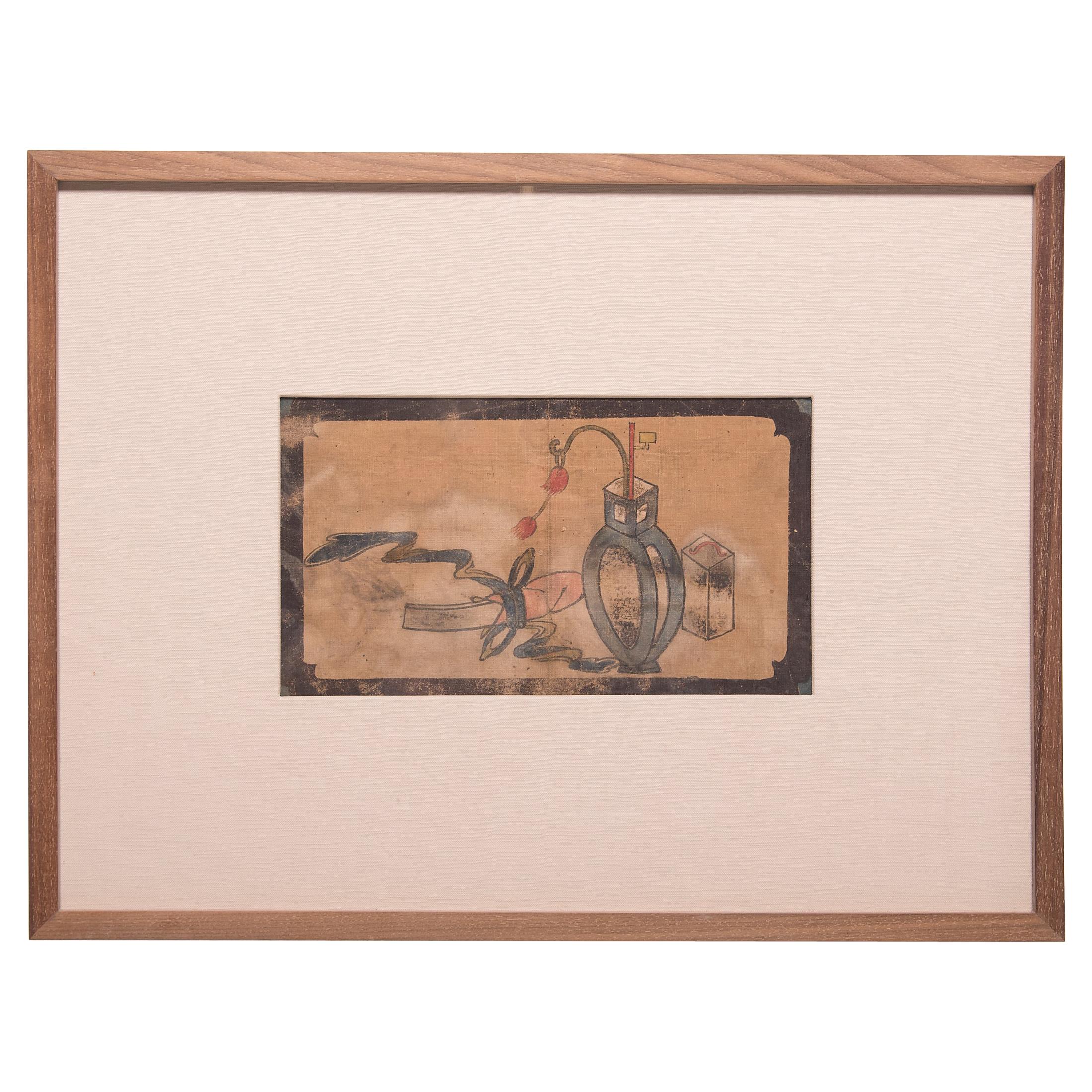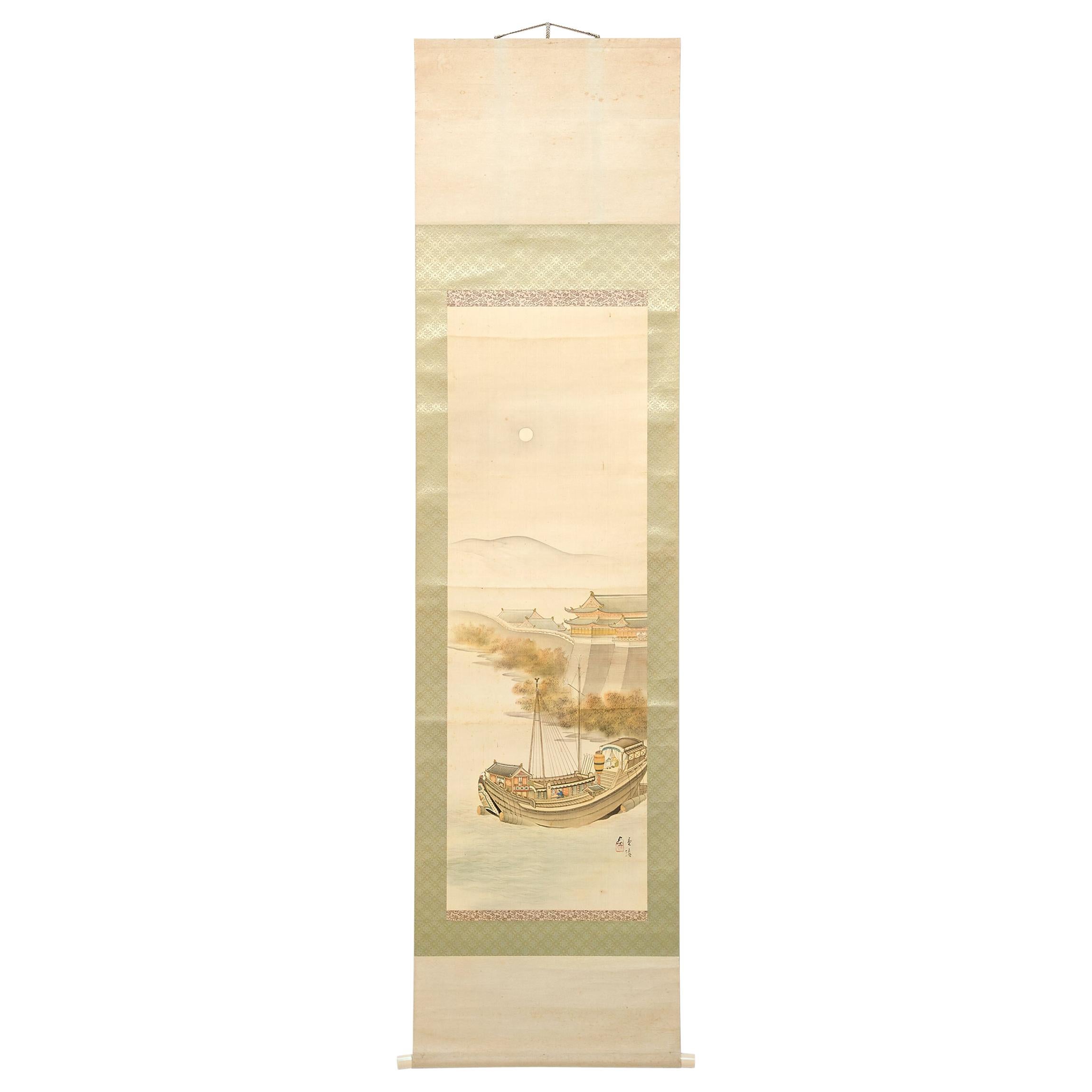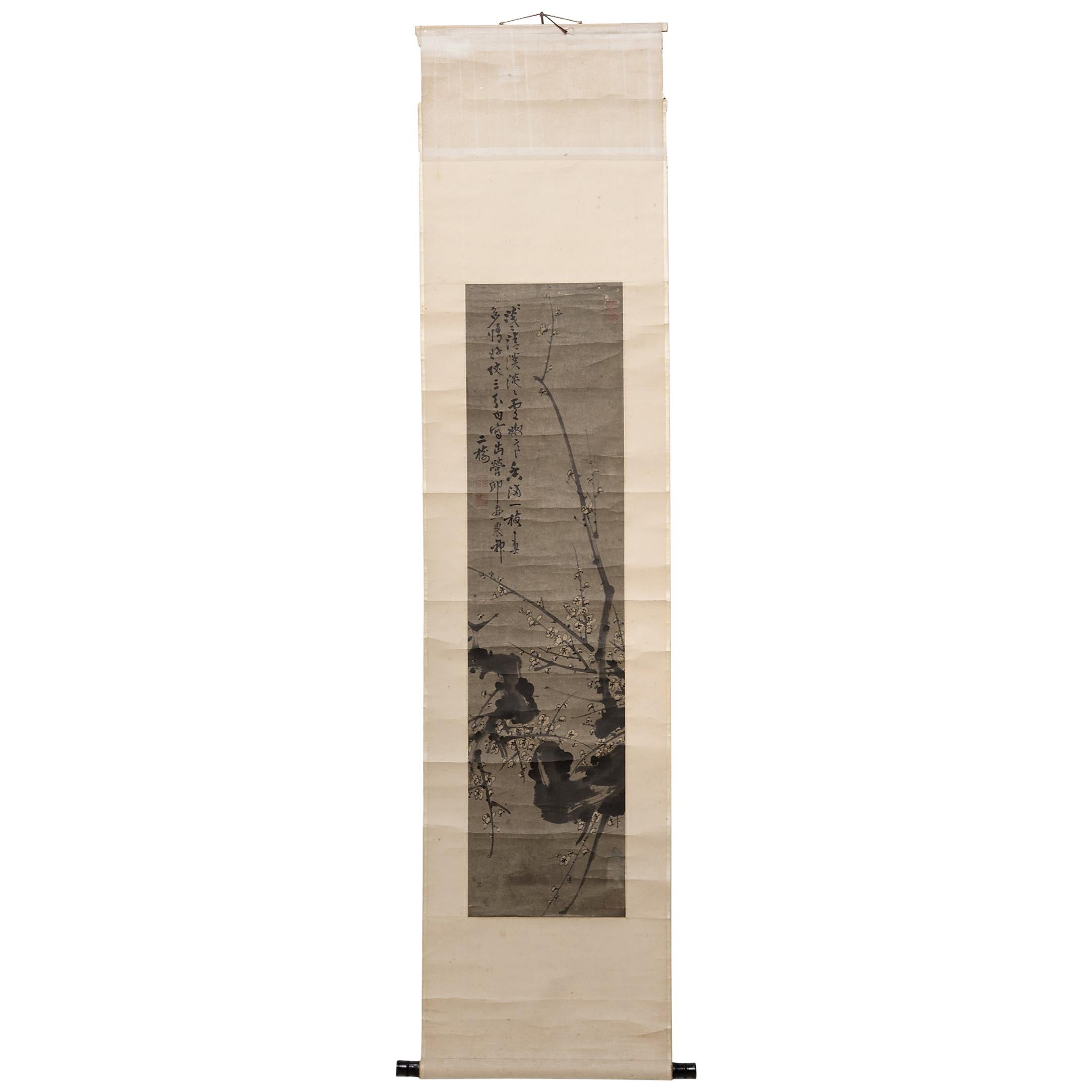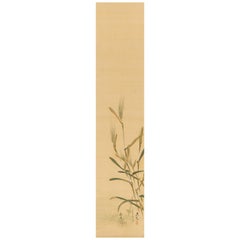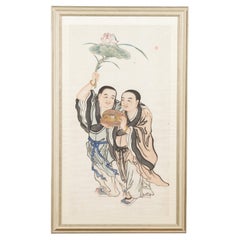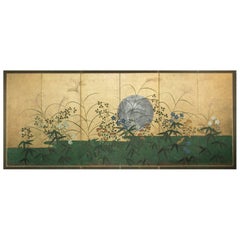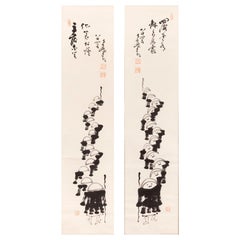
Nakahara Nantembō, Monk Processions
View Similar Items
Want more images or videos?
Request additional images or videos from the seller
1 of 12
Nakahara Nantembō, Monk Processions
About the Item
- Dimensions:Height: 80.32 in (204 cm)Width: 18.71 in (47.5 cm)Depth: 0.4 in (1 cm)
- Materials and Techniques:
- Place of Origin:
- Period:
- Date of Manufacture:circa 1880
- Condition:
- Seller Location:Milano, IT
- Reference Number:1stDibs: LU4250216229532
About the Seller
5.0
Recognized Seller
These prestigious sellers are industry leaders and represent the highest echelon for item quality and design.
Established in 2005
1stDibs seller since 2018
10 sales on 1stDibs
Typical response time: 3 hours
More From This SellerView All
- Shibata Zeshin ‘1807-1891’, BarleyLocated in Milano, ITMedium: Hanging scroll; ink and pigments on silk Signature: Zeshin Seal: Tairyukyo Date: circa 1880 Painting size: 98 x 20 cm Mounts size: 182 x 32 cm Shibata Zeshin...Category
Antique Mid-19th Century Japanese Paintings and Screens
MaterialsPaper
- Painting by Maeda Josaku (Japan, 1926 – 2007), Paysage Humain N° 14, 1960Located in Milano, ITSigned: Josaku Meda. 60. Singed on the back: "Paysage humain" N°14 / 7.1960 / Josaku MAEDA / à Paris Exhibitions: Turin (Italy), Gissi Gallery, Collettiv...Category
20th Century Japanese Paintings and Screens
MaterialsCanvas
- Hanging Scroll by Kamisaka Sekka, JapanLocated in Milano, ITThis painting represents a man waiting under a dark tree. The composition is extremely simple but suggestive. The artist, with few elements, can, in fact, create a vivid and dynamic scene, based on the tension between the strong ink stain that renders the tree and the elegant figure of the man, dressed in an aristocratic robe. Painter and designer, Kamisaka Sekka...Category
Early 20th Century Japanese Paintings and Screens
MaterialsPaper
- Pair of Japanese Two-Fold Screens with Flower Arrangements and Rare BirdsLocated in Milano, ITKaramono with flower arrangements and rare birds Edo period, 18th century Pair of two-panel folding screens Ink, colors, gofun and gold leaf on paper Each 170 by 165 cm ...Category
Antique 18th Century Japanese Paintings and Screens
MaterialsPaper
- Pair of Japanese Screens with Flowers of the Four Seasons, 19th CenturyLocated in Milano, ITThis pair of screens belongs to a genre of lyrical paintings of flowers, grasses, and other plants that flourished around the middle of the 17th century and became a specialty of the Sôtatsu studio. The use of a rather complex composition of clusters of flowers and the puddling of ink was initiated by Tawaraya Sôtatsu, the founder of the Rimpa School, who was active from 1600 until 1642. The screens are abstract and decorative but there is, at the same time, a keen sense of naturalism not only in the attention to accurate detail but in the profusion of vegetation. The passage of the year is symbolized by the variety of plants that bloom in different seasons. The tarashikomi - here used on leaves, petals and trunks - is a Classic Rinpa technique in which pale black ink or a color is brushed onto an area of a painting and then either darker ink, or the same or a contrasting color, is dropped into the first before it has completely dried, creating an effect of pooled colors with softly blurred edges. Its delicacy, preciousness, and effeminacy are identified with the over-refinement of its patrons, while the vigor, monochromatic discipline, sharp observation, and virile forms of the Kano school are a testament to the vitality of the rising warrior class. The plants are almost all identifiable: in the summer-spring part, you can find wheat, buttercups, irises, begonias, hydrangeas, coral bells...Category
Antique 19th Century Japanese Paintings and Screens
MaterialsPaper
- Japanese Two-Panel Screen with Scenes at the Pleasure Quarters, 18th CenturyLocated in Milano, ITIn the pleasure districts, the stringent codes were meant to be forgotten. In this painting, some clients are watching from outside the teahouse, while some are entering, one of them...Category
Antique 18th Century Japanese Paintings and Screens
MaterialsPaper
You May Also Like
- Framed Painting of Two Japanese Buddhist Monks with Lotus Flower and Wicker BoxLocated in Yonkers, NYA Japanese framed painting from the 19th century depicting two walking Buddhist monks holding a lotus flower and a wicker box, in custom frame. Created in Japan during the 19th century, this vertical linen canvas painting depicts two Buddhist monks walking together, one of them holding a partially bloomed lotus flower, symbol of enlightenment, while the other one is opening a wicker box, the content of which seems to be bringing them great joy. They are both wearing a golden bracelet...Category
Antique 19th Century Japanese Paintings
MaterialsFabric, Plexiglass, Wood
- 19th Century Japanese Six Panel Screen: Silver Moon Rising Over Summer FieldLocated in Hudson, NYJapanese Six Panel Screen: Silver Moon Rising Over Summer Field. Rimpa Style painting of a moon rising over summer flowers and grasses, including cockscomb and blue bellflowers. Pa...Category
Antique Late 19th Century Japanese Meiji Paintings and Screens
MaterialsGold Leaf
- Japanese Two Panel Screen: Flowering Lilies on the Beach with Dancing CrabsLocated in Hudson, NYJapanese Two Panel Screen: Flowering Lilies on the Beach with Dancing Crabs. Taisho (1912-1926) period painting of spider lilies, tiger lilies, and morning glories in bloom at the ...Category
Early 20th Century Japanese Taisho Paintings and Screens
MaterialsWood, Silk
- Japanese Six Panel Screen: Moon Rising Over the Plains of MusashinoLocated in Hudson, NYJapanese Six Panel Screen: Moon Rising Over the Plains of Musashino. A classic motif in Japanese art. Japanese artists were used to seeing vistas with mountains, valleys, and fores...Category
Antique Late 19th Century Japanese Paintings and Screens
MaterialsSilver Leaf
- Chinese Yangliuqing New Year Painting of Beauty and Baby, c. 1920Located in Chicago, ILChinese New Year paintings (nian hua) are colorful folk paintings created to celebrate the annual Spring Festival. Drawn or printed by folk artists in regional studios, nian hua pain...Category
Vintage 1920s Chinese Folk Art Paintings and Screens
MaterialsPaper
- Chinese Erotic Album Leaf, c. 1850Located in Chicago, ILDespite its explicit content, this intimate scene conveys a sense of tenderness and romantic love characteristic of Chinese erotic art. Known as “sp...Category
Antique Mid-19th Century Chinese Qing Paintings and Screens
MaterialsPaper
Recently Viewed
View AllMore Ways To Browse
Japanese Scroll Edo
The Tale Of Genji
Japanese Antique Landscape
Asian Screen Red Horses
Taisho Screen
Taisho Screens
Showa Silk Paintings
Pair Of Small Asian Portraits
Korean Jakhodo Minhwa
Mughal Horse Painting
King Abdulaziz
Tales Of Ise
Erotic Pillow Book Chinese
Manjushri Thangka Of Wisdom
Qiu Yu
Chen Hongshou
Chinese Qing Style Relief Carved Window Panel
Derbys Guan
